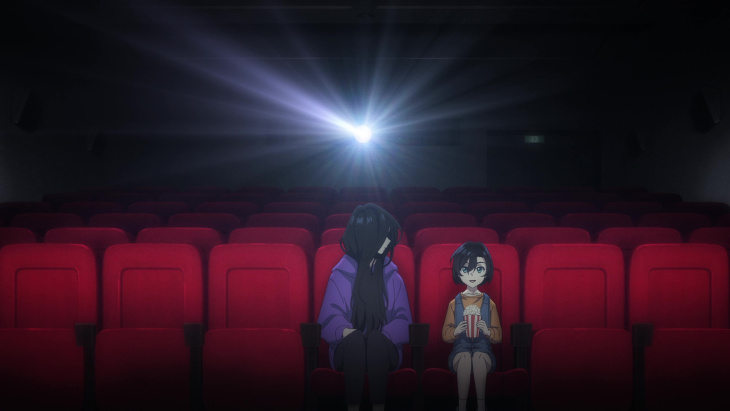
“Draw. You need to draw, Natsuko!”
Anime original productions can sometimes be a bit of a mess in terms of pacing and execution. After all, adaptations can look to the original medium as a form of rough draft and smooth out the rough edges. When viewed through this lens, I find Zenshu holds up rather well, even if I don’t think it measures up to the acclaim it garnered at the onset of the season. After all, it still suffers from pacing and logic issues, like I noted in my First Impressions review.
Still, the end result presents its own twist on the Isekai genre, which feels much more introspective and focused on analysis of anime as a medium when compared to the bulk of its counterparts. Furthermore, the final stretch does a much better job of capitalizing on its themes than the early episodes did. Ultimately, I feel Zenshu is worth recommending and gets progressively better as it goes along, but given its strongest elements are in the latter half, it may not fare well against the “3 Episode Test.”
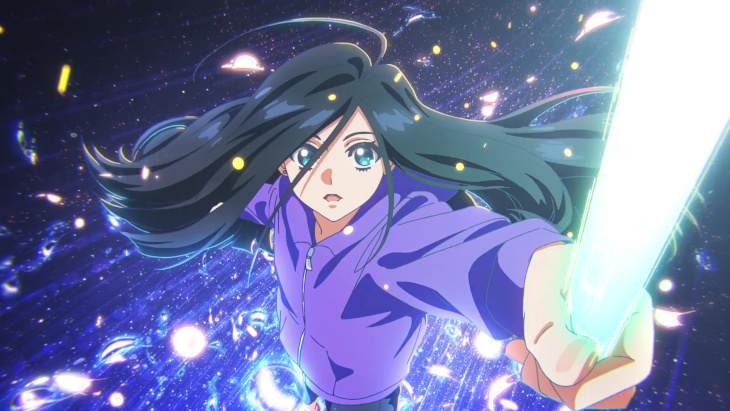
The series follows animator Natsuko Hirose, who, after a run-in with some expired shellfish, finds herself in the world of the very film that inspired her to become an animator, “A Tale of Perishing.” In it, she struggles to change the course of the narrative by fighting alongside the remaining heroes who are trying to stave off the end of everything. She’s aided in this task by her power to bring the images she animates to life, which she uses to counter the monstrous “Voids” which seek to destroy all existence.
I think part of why I found the first half of the show to be inferior to the second is that it’s largely formulated as a love letter to other anime, most of which I have limited connection to. This may be my own fault, as even references that could have clicked with me simply didn’t. I watched Nausicaä of the Valley of the Wind about a decade ago, but I’d never have been able to recognize that the giant in the first episode was a reference to it. I’ve questioned whether it’s my fault that the early episodes didn’t connect with me, but I struggled to find a firm answer. I’ve reached the conclusion that, even as a love letter to anime, the show should be able to hold the attention of a viewer who can’t relate to the nostalgia at the show’s core, so I think it still bears some of the blame.
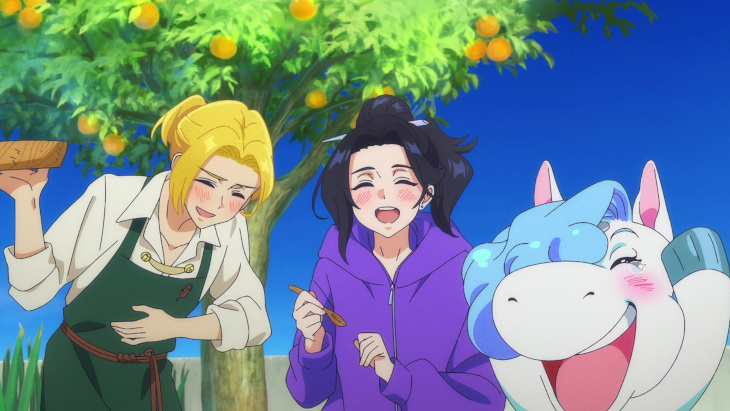
Even if the references were mostly lost on me, one thing I can admire is how effectively the show captured the feel of older anime. I never asked for an amalgam of Revolutionary Girl Utina and The Vision of Escaflowne, but I can see hints of both in the show’s style and characters. It successfully captures the sense that an early 90’s anime work came alive and is being viewed by, and responding to, a modern observer. I thought this might clash more with my sensibilities, given my lack of affinity for older anime, but that fear proved unfounded.
Plus, once the cast of this nostalgia trip found their footing, the show started to pick up and feel less episodic. The denizens of this fantasy world gradually transition from archetypes to fleshed out characters, with the hero Luke, and the team’s bratty mascot unicorn, Unio, receiving the most development. Still, the story is centered around Natsuko and her attachment to the central work, so it’s unsurprising that she receives the most development and exploration. This is good, as I found her to be an annoying lead during the first few episodes, but by the end, she was easily my favorite cast member.
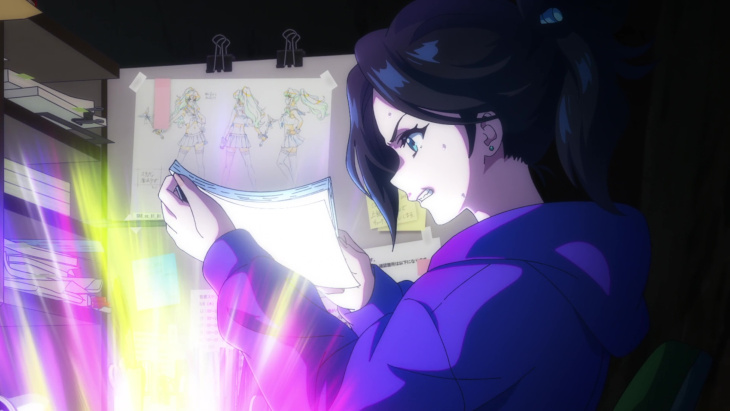
I was looking over MAPPA’s filmography, and noticed something. While I like a couple of their shows and I associate their name with stunning visual quality, when left to my own devices, I usually don’t finish them. This means that, while I’m still not head-over-heels for Zenshu, it might be one of my favorite MAPPA productions. That surprises me, but I guess I haven’t clicked with MAPPA’s storytelling as much as I assumed I had.
Regardless, they bring their A-game to Zenshu, and it results in some brilliant sakuga through the course of the series. Natsuko’s creations are depicted with rough line work that evoke the rough sketch-like quality of an early draft. The one criticism I’d levy against the production is that I’d prefer they truncate the magical-girl style sequence in which Natsuko summons her drafting table. It was cool once or twice, but it shows up in every episode with minimal variations. I admittedly skipped the OP on most viewings, but I can’t deny that it does a great job depicting the themes and characters of the show.
Before I wrap up, a few Notes and Nitpicks:
- Obviously, I didn’t miss all the animation references sprinkled throughout. It’d be hard to be that oblivious, as a literal Gundam does show up at one point.
- It still bugs me how long it took Natsuko to realize she was in A Tale of Perishing.
- I was given a copy of The Vision of Escaflowne with the new dub for my birthday, but given the number of anime I’ve been following this season, I haven’t had a good window to crack it open yet. Actually, I’ve hardly played any games either. Nine anime was a bit too much to follow this season.
- There is something rather awkward about watching a MAPPA produced anime focusing on an animation lead who is introduced as a perfectionist and creates a hostile work environment for their employees… Is this MAPPA performing self-counseling?
While it takes a while to hit its stride, Zenshu is a heart-felt love letter to the medium that is anime, and it provides a compelling narrative about the impact that art can have on us. With stunning visuals, memorable characters, and well-conveyed themes, Zenshu stood among the top shows of the season, though the competition may have been a little lacking.


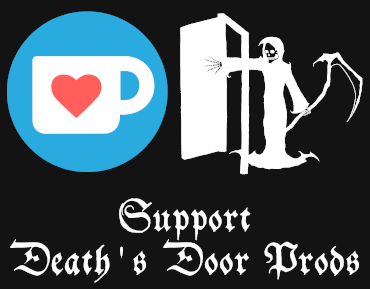

Add comment